|
Powerful but Easy to Follow Speaker Strategies for Not Letting Nerves and Fear Take Over Do fears and nerves take over you when you get in front of an audience? You are NOT alone! Do you know that public speaking is one of the most common fears in the world? Whether you are talking to your colleagues, your prospect clients, people on social media or in-person live audiences, it is normal to feel fear and nerves. However, you don’t really want your fear and nerves to completely overcome you. This won’t serve you or your audience. Due to my years of speaking in front of huge audiences worldwide --- parliament members, big conferences, CEOs, TEDx, speech contests etc., I have had to learn the art of overcoming my nerves and fears to ace every audience interaction. How did I do it? I would like to share THREE STRATEGIES that have been a part of my journey to master this, plus a golden strategy that I will share at the end of this article to support you to become a truly confident and inspiring speaker. Let’s get started. STRATEGY #1 Give yourself the time to do Mindful Forecasting You have the powerful ability to tap into a wide range of emotions throughout different parts of your presentation or speech in order to convey your message more effectively. This process benefits not only you, by shifting you out of fear and nerves and into intention, but also your audience as you are delivering your message and value. This powerful ability is enhanced when you mindfully forecast what those emotions will be before you even get up on stage (whatever your stage is). So, ask yourself: “How do I want to feel in different phases of my presentation?” “How do I want to feel when I first connect to my audience?” “How do I want to feel when I share the story?” “How do I want to feel when I am sharing the key take-aways?” This process is Mindful Forecasting. When we are conscious of what we would want to feel across our presentation or speech, we connect to our intentions of the message proactively instead of being reactive. In doing so, we can mindfully forecast what the emotions feel like and tap into them throughout. If it’s joy, think of what it sounds and looks like to be joyful. Connect to that emotion and remember what it feels like, connect to past memories and experiences of when you were joyful. Therefore, when you reach that point in your talk, you’ll know how to respond. Think, “Okay, in that part of my speech, I’m going to bring that emotion.” This is being mindful and conscious about the different emotions you want to have during your presentation, which shifts you away from fear and nerves. It then becomes less about reaction and more about PROACTION. STRATEGY #2 Tap into Rest and Digest Mode Ever felt your Freeze or Flight Response take over? Yes? Well my guess is, that’s not what you probably want happening when delivering your presentation or speech. To feel as though you are being forced or backed into speaking in front of your audience will take away the presence, focus and ability to serve them. Therefore, the Freeze or Flight Response is probably not the way to go. What you probably want to experience is to talk in peace, to be in a state of “Rest and Digest” throughout your talk. In order to connect to this restful and peaceful base state, there’s a special technique I would love to share with you. Firstly, remember what Brendon Burchard explains, “Common sense is not always common practice”. Therefore, even if you have heard a variation of this technique before, if you haven’t been artively doing it, I invite you to be open to giving it a proper go. So, what is it? How can we calm our body and mind? How can we free our mind from the unnecessary stress and pressure we impose on ourselves? We connect to our: breath. One of our most important skills and resources. Specifically, we can do FOUR-SECOND BOX BREATHING. This means breathing in for four seconds, holding our breath for four seconds, breathing out for four seconds, and holding empty for four seconds. Repeat this cycle as many times as needed, and feel the pressure lessen and lessen. You can tap into any emotion you choose through mindful forecasting, while still remaining a baseline of calm and peace underneath through your breath. So, calm your mind and your thoughts. Deliver a kick-a** presentation, talk or speech. STRATEGY #3 Activate the Celebration Anchor Technique “I’m excited!” vs. “I’m petrified” Send the right message to your brain by feeding it with nourishing thoughts. Connect to the thoughts of “after”. Anchor the feeling that comes after you finish something important and keep connecting to it consciously whenever it happens. This technique allows you to build and connect yourself to the feeling of celebration. So, before you speak in front of your audience, think about and anchor how you will feel after you received their applause, or when you run over to your partner after to give them a hug, or gaining a high-five from your friends, or when everyone says, “Yes! You did awesome! Well done! Thank you for all of the value.” Think of the feeling of relief, successful release, the feeling of contribution, and the feeling of achievement after finishing something you were previously nervous about. This shifts your energy and language to “I’m excited” instead of “I’m petrified”. Satisfying feeling right? Setting up the right tone and vision for your mind makes you even more present and effective. So, keep sending the right message to your brain and anchor the “after” celebration throughout your presentation or speech. Yay! Now, if you have read this far, I know you are excited to learn my GOLDEN STRATEGY that saved me multiple times already from being overcome by fear and nerves, and helped me to ace every presentation and speech I delivered. Golden Bonus Strategy Physiology Activate If you are feeling the fear and nerves creep in, it is time to get up and act and feel like you are ready to rock that stage! This means, move and stretch your body, dance, sway, allow the energy to shift. Hold a confident pose like the Superhero Pose, and smile as you do this. Especially when waiting for your turn on stage (whatever your stage is), try not to sit on the chair and hunch over. The last thing you want to do is send a signal of low confidence to your brain by holding a hunched over posture. Stand up if you can and open your up body so that it is ready to take on the stage. Walk around. Get your body in motion. Dance. Open yourself up. Feel like you are ready to take it on! Let you mind and body know, you’ve got this! Woohoo! These three powerful yet simple steps, plus the golden strategy, helped me experience successful presentations and speeches all around the world. Now, you can have that success too! Have any other challenges you would like help with the solution on? Feel free to reach out to me at www.jodydontje.com/connect and share your challenges. As always, I'm here to serve. Remember, every day you have a choice: You can choose to be ordinary, or as Denise Burchard explains “YOU CAN CHOOSE TO BE EXTRAORDINARY”. So, go out there and choose to be EXTRAORDINARY. Be Brave. Be Vulnerable. Be Kind. With kindness, 
0 Comments
The Mindset You Need to Achieve Your Dreams - Life-Changing Strategies Have you ever thought about what could kill your dreams? What can stop you from achieving all the things you want to achieve in life? Our dreams are one of our greatest motivators for doing good in life. However, sadly, a lot of people never reach their dreams... I don't want that to happen to you! So, in this blog, I will be sharing what can derail you from your track and what can keep you steady as a high performer. Read until the end for my Successful Mindset Pro Tip. Progressive Mindset vs Absolute Mindset Do you know that there’s a place out there called the “graveyard”? You might have walked across or passed a graveyard before, right? The thing is, a graveyard doesn’t just hold people who’ve passed away... a graveyard holds books that could have been written, solutions that could have been created, movements that could have been started, and even families that could have been made... People’s dreams were taken to the grave, and I don’t want that to happen to you! So, let’s lean into a progressive mindset instead of an absolute mindset! What is an ABSOLUTE MINDSET? This is an all-or-nothing attitude in a thought process where you consciously or subconsciously set fixed conditions for yourself. For example as a health goal, it sounds like, “If I’m not getting the weight goals that I expect to get when I expect to get them, then I am going to quit.” If you’re doing anything in life that is aligned with your values and vision, something that will bring out the best in you, but you decide to quit because it’s taking too long to get the results you want, or it’s not what you expected to be in terms of a “perfect journey” --- you are approaching Absolute Thinking. Pause for a moment and think - In your life, how many times have you quit something because it got a little bit more difficult? Or it wasn’t this perfect journey, people judged you, or you thought they judged you? How many times have you quit, stopped something or put it aside and didn’t prioritise it as much? If those goals truly do matter to you, I don’t want you to take your dreams to the grave. So, ADOPT A PROGRESSIVE MINDSET. What is a PROGRESSIVE MINDSET? Having a Progressive Mindset means it is not purely about the end result, but about your growth and the wins throughout the process. This is where you learn to build a positive experience from “failures” or setbacks, where you have the ability to evaluate the situation and look forward to new opportunities, this is where you gain higher levels of motivation (or better yet, inspiration) than ever before. A progressive mindset is a mindset where you think, “Well, how am I growing in this journey? Who am I becoming as I am progressing towards that goal? Yeah, maybe I’m not hitting my weight loss goals, but hey, I’m actually healthier. I have more energy. I actually might live longer in my life to be able to stay alive for my grandchildren.” Long-term Progressive Encouragement --- that’s what is rich in this mindset, where forward thinking is at the core of everything along the way. This is the same with Public Speaking and Communication. As a Public Speaking and Emotional Fitness Coach, I focus on the deep transformation for my members. That’s what my mission is all about --- facilitating peoples confidence to get better in all areas of life throughout the journey of becoming a confident speaker and inspiring leader. To be an inspiring and confident speaker, you need to adopt this progressive mindset also. Like with other endeavours, it’s not always going to be an easy journey. There will be setbacks, but if you give up, then it feels like failure. However, if you keep progressing and think about how you are growing as a person along the journey towards those big speaking or big communication goals, or a big promotion, or whatever else, then it’s fulfilling! Right? The whole journey’s fulfilling! You’ll have more purpose. Remember, the breakthroughs --- the breakthroughs are just around the corner of the breakdowns! Your dreams matter. I trust that this message so far has added value to you. Success Mindset Pro Tip As promised, here is my Pro Tip for a Successful Mindset. My pro tip is to remember what the BE goals are along the journey. Not just the do goals that requite outward and external action, but the deep inner transformation and intention driven goals about WHO you need to BEcome in order to achieve the external goals that you are working towards. When you shift your identity and who you are, your actions and therefore results will be much more successful and essentially aligned to getting you to that end result. Who do you need to BE to achieve the goals? Who are you becoming as you progress? How is this journey allowing you to lean more into your values? What is the journey going to give you in terms of confidence? What is it going to give you in terms of skills? All of that, instead of the end result. Instead of just the destination, as the cliche goes. Adopt this and you’re going to have way more chances of achieving those big goals and making your dreams come true. Woohoo! Well done for reading up until this point. If I can support you in any other way, please let me know of any topics you want me to make videos on or write blog articles about. Message me at www.jodydontje.com/connect or email me at namaste@jodydontje.com with your topic(s), and I’ll make sure to do a video or blog article just for you. I'm here to serve. Remember, every day you have a choice: You can choose to be ordinary, or as Denise Burchard explains “YOU CAN CHOOSE TO BE EXTRAORDINARY”. So, go out there and choose to be EXTRAORDINARY. Be Brave. Be Vulnerable. Be Kind. With kindness,  Top Tips for Public Speaking like a Champion - Life-Changing Strategies 4 Minute Read. To watch the video version on Facebook click here. Do you want to know how I just won 1st Place in the Australian District Speech Contest Evaluation Finals? In this blog article, I will be sharing my Top Three Speaker Tips and my Pro Strategy that helped me win first place, so you can also achieve our own WINS when speaking in everyday life. Let’s get started. WINNING TIP #1 Let others feel your energy before you even speak a word. Smile. Simply start with a radiant and heart-felt smile. Make sure that those around you recognize your smile and it radiates in the entire room (even if it’s online!). When I went into the speech contest room, where other contestants were already waiting, I wore the biggest smile I could have. I saw the room instantly shift as they saw me. One of other contestant actually said out loud in front of everyone, “Hey Jody! Before you even started speaking, just because of your smile and energy, you’ve made the room lighter and happier.” It was a very validating statement for me. “Wow! What an amazing compliment,” I said. That’s what I want for you. You want to make sure that the person, or the people who are watching you, feel that vibrancy before you even say a word. So, I invite you to s-m-i-l-e. WINNING TIP #2 Make sure you have a structure that works. When doing a speech presentation, speaking on a panel, giving feedback, being in an interview, whatever it is for you --- make sure you have a structure in mind. Once you have a structure, all you need to do is trust in your ability to follow this. Before my speech contest, I had no idea what my speech would be about. It was an impromptu speaking evaluation, so speaking on the spot. Though this was the case, guess what I still had planned though? Yes, a structure. I had a loose structure on how to evaluate different people in different circumstances already in mind, which led me towards a very effective impromptu speech. There are a lot of speaking structures you can use too! It all depends on the purpose and the type of speech you will deliver. I had a structure specific for evaluations, which I can share in a future blog. For now, when you are needing to answer a question, present or talk through something, you can generally try these and see which one works for you: ● Chronological Structure. This structure is the most common of all. It normally follows a format according to time. You can start the sequence by walking us through the past, present and then future, or sometimes present, past and future, or whichever arrangement works best for you. For example, if someone asks, how did you become who you are today? You can start with what life was like in the past, what your biggest learning and shift is now in the present, and what this means for you going forward. It flows nicely. ● Problem-Solution Structure. This is when you frame the problem thoroughly, where it demonstrates how that problem concerns them personally; talk about its impact towards everyone and the depth of the problem. As Tony Robbins explains, people do more to avoid pain than to gain pleasure. Build-up your speech in a way that they feel the depths of the problem, and therefore they will eagerly listen to what you can offer as a solution. This will hook the audience in and make them want to listen to your full speech, presentation or answer. So, make sure that your solution addresses the problem effectively and efficiently. ● Storytelling Structure. Everyone loves stories! But it all depends on the story. This structure demands good narration and acting skills, and it’s important to only include the details that enhance the story, and not take away from the flow. E.g. Do we really need to know the exact age, brand, colour, size and condition of the boat in your story, or is it more important to talk about how you felt on that boat when your dad was teaching you how to fish for the first time? Use conversational styled language also and interesting plots to make a good point. You can add some body animation as that helps too! Bring your stories to life. Besides these, there’s a long list of different structures you can use. Whichever suits you, make sure that it fits the purpose and your specific audience. It should always be tailor-fit. And remember to allow yourself to let go of the fears by trusting in the structure. WINNING TIP #3 Have a Contribution Mindset. When you take on that stage, do you tend to make it about you? “What are they going to think about me? Are they going to judge me? What am I going to do if I make a mistake? What am I going to do if I do things like this, like that?” If those are the questions you keep on repeat before and during that entire presentation or speech, you’ve made it about yourself. And guess what? Your audience is going to feel that, too! That energy will transfer to them. So, frame your mind with the right questions. Make it less about you but the contribution you will offer to the audience. “How can I add value to the discussion? How can I give a new perspective to serve the audience? What would benefit my audience the most? What problems can I help them solve?" When I went into the speech contest, I thought. “How can I give so much value to the person that I am evaluating that they feel empowered and full?” There, I am sending a clear and positive energy to the judges and the people watching me, that I am giving a lot of value. Rather than making it more about yourself, focus on what you can bring as a contribution to the progress of the discussion. This very well led me towards winning that first place title. Golden Bonus Strategy Make your beginning and ending powerful! Bring the WOW Factor! Make sure that the first and last 10 seconds of your speech are powerful. In human neurology, we can’t remember everything somebody says, but we can remember the beginning and end. So, start strong and end strong! When I do a speech, I make sure I start with something that will catch the audiences attention --- a physical movement, a high-five with a person, or I’ll lean into the camera. If I’m speaking live, I’ll make a noise or I’ll move my body in a way that will surprise them. I can start sharing a quote, or a fact or something valuable, and I end doing the same. It’s important that your audience feels like they gained an experience and not just have a few takeaways from you. Start your presentation or speech with a woosh and end with a bang! Woohoo! We have come to the end of this blog article. I invite you to make sure you try on these four strategies, play with them and give them a go. Go out there, and be number one in whatever it is you’re trying to achieve, and celebrate you along the way. Also, if I can help you in any other way, please let me know what topics you want me to help you with. Simply message me here www.jodydontje.com/connect or mail me at namaste@jodydontje.com. I’ll make sure to do a video or blog just for you. As always, I'm here to serve. Remember, every day you have a choice: You can choose to be ordinary, or as Denise Burchard explains “YOU CAN CHOOSE TO BE EXTRAORDINARY”. So, go out there and choose to be EXTRAORDINARY. Be Brave. Be Vulnerable. Be Kind. With kindness,  P.s.
To watch the Video Version on Facebook, Click Here. Life-Changing Strategies for Speakers & Leaders - How to Have Emotional Mastery 7 Minute Read. To watch the video version on Facebook click here. Remember the time when you felt like the world was against you? That everyone was out to get you? Have you felt that way when you were in front of your audience? Being a leader and a speaker can be scary. You put yourself out there and you make yourself vulnerable, and that can be challenging at times. Therefore, it is important to have emotional mastery skills. The fact is, even if you have all the strategies in the world around speaking and around leadership, if you don’t have emotional mastery skills, at the end of the day, you’re still going to feel disconnected, you’re still going to feel unfulfilled, and you’re still going to feel unsuccessful. I don’t want that for you. So, I am going to share with you my three Mastery Tips on how to have emotional intimacy, plus read through to the end for my Golden Strategy. MASTERY STRATEGY #1 Empathy It is important to be able to become intimate and gain mastery with your emotional world through EMPATHY. Now, remember what Brendon Burchard explains, “Common sense is not always common practice.” So I want you to bring on the learning mindset and be open to learning something new. Because the fact is, we can all be more empathetic, right? Remember the time when things just built and built and built and all of a sudden, you exploded, and you’re like, “And I probably could’ve been more empathetic about that person.” Let me share a little story with you. Many years ago, when I was absolutely drenched and overwhelmed in limiting beliefs and in low self-esteem, I was fearful of people’s judgment all the time. I went to the bathroom sometimes 15 times a day to make sure there’s nothing on my face that people could make fun of me about... I was in utter despair about the world and people‘s judgment. On one of those days, while I was crying and crying in my room, my mother walked into the room and said, “Jody, the world is not all about you. The world doesn’t revolve around you. It’s not all about you.” I remember my heart was in pain as I heard her words. I didn’t feel any better. But, as she elaborated and as I allowed myself to be open to what she was sharing; a few days later, I was walking down the street when I realized people were looking at me. Automatically, I thought, “those people are judging me. What’s wrong with my outfit? What’s wrong with my face? What’s wrong with my hair?” I was so ready to think people were judging me. And at that moment, I thought, “Do I really feel like everything is about ME?” And it was this huge paradigm shift; I was like, “Woah! This is something I do all the time.” Now, empathy is where we stop being “me! me! me!”. And we allow ourselves to look through the lens of curiosity, of contribution as a speaker and as a leader. It’s not about ‘me, me, me’ on stage. Whatever your stage is, whether it’s a Facebook live, with your family, in a meeting, on a panel, actually in front of an audience, or on camera --- as a leader and a speaker, you make it about the other person --- your audience. What are their challenges? What are their struggles? Get into THEIR world. Go into their space and give them the solution. Give them value. Lead and show them their potential. If you make it about them and have that empathy, everything shifts. Your fears and your doubts begin to wither away. And through what I call the Contribution Mindset, you can really make a difference. So, have empathy. Finally, empathy doesn't mean we have to have gone through the exact experience of someone else to be empathetic. I once had a friend who was really upset about something that she went through. Before I even said a word, she said to me, “But you wouldn’t understand because you haven’t gone through this.” Now, she was so lost in “Victim” that she believed no one else in the world could possibly have gone through what she was going through. She didn’t believe that people would understand how she felt. But the fact is, we are all humans. We’ve all gone through pains, struggles and challenges. We’ve all gone through hardship. We’ve all gone through different rays of joy and light and sadness and darkness. So, it's important to understand that even if we haven’t gone through what someone has gone through, in the same way, we know how that emotion and pain feels or we can at least empathize with how they might be feeling. So, put on your empathy cap. Live through contribution and you’re going to have way more success as a speaker and a leader. MASTERY STRATEGY #2 Self-Awarenesss Mastery tip number two is to ensure that you have SELF-AWARENESS. Now that we’ve focused on others, we need to focus on who we are and what our Emotional Reactivity Raw Spots are. What are the things that you get triggered by? Just know, the world isn’t triggering you, you are reacting to the world because of your childhood, because of what you’ve gone through, because of experiences and challenges. “We don’t see the world as it is, we see the world as WE are” - Anais Nin So, instead of going into “the world is against me” and it’s “me, me, me”. We should go - “Well, this is really interesting. I’m really emotionally reacting to this thing that someone said, to this particular thing that I saw. I wonder why?” Remember what I’ve shared in my previous blogs and videos, bring Curiosity back! Be curious about your internal world, and be willing to be brave, vulnerable and courageous enough to heal and to allow yourself to be supported through that healing. I don’t teach anything that I haven’t gone through, struggled through, and then got results with myself. I share what works for me. I share what works for all the people that I’ve helped. And the fact is, it’s challenging to help someone else through something unless you’ve allowed yourself to walk through the door of self-awareness and growth yourself. So, allow yourself to be supported, to think of your childhood, to realize your Raw Spots so that you can take an autonomous responsibility for your emotions in the workplace and personally. When you are public speaking, it means you can lead and rock on even if something emotionally triggers you; you can rock on and then give yourself the time after that moment to feel it. When you are aware of your emotional world and Raw Spots, you can also tell someone, “Let’s circle back in 10”, as Brene Brown explains, “I’ll come back once I feel a bit more settled.” Thus, go and feel your emotions. Emotional Mastery doesn’t mean you push your emotions away --- oh my gosh, no! It means you can feel all of your emotions and can welcome support through this also. I’ll write about how you can actually do that emotional support for yourself in another article, so you can heal and then rock out as your best speaker-self, your best leader-self. So, ensure that you have that self-awareness and allow yourself to feel. MASTERY STRATEGY #3 Healthy Boundaries Tip number three is HEALTHY BOUNDARIES. Now that we’ve focused on others through empathy, and have self-awareness for ourselves, we need to be able to have healthy boundaries. Part of healthy boundaries is knowing what is okay and what is not okay for us. Let’s be reminded of Gwyneth Paltrow’s words, “We’re not learning anything unless we’re having tough conversations.” Allow yourself to be brave enough to put your healthy boundaries into place, because guess what? You’re holding back in your life. You’re not allowing yourself to be fully seen or stepping up in your career or in your personal life, because deep down, you are afraid that you won’t be able to handle what other people put on you, or what other people share with you, or how the world reacts to you. The fact is, if you have healthy boundaries, you have the superpower to say NO. You have the superpower to be able to understand what is okay and not okay; what situation you want to be in, and what you want to remove yourself from. With healthy boundaries, you surround yourself with people who lift you up. So, guess what? A lot of your barriers are around boundaries. Like Brene Brown says, “The kindest people in the world have the biggest boundaries.” BE AWARE of what’s okay and not okay for you so that you can then share with others your healthy boundaries. Also know, you cannot respect other people‘s boundaries until you’re able to respect your own. So, make sure that you’re able to put your boundaries in place, so you can respect other people‘s boundaries. As a speaker and a leader, your success is going to flow from there. People will feel safe when they know your healthy boundaries and how far your kindness can stretch. Make sure to have your healthy boundaries, and courage, assertiveness, and healthy anger. Put those boundaries in place with a sense of living into your values. I trust that I have added value to you through my three mastery tips so far. Golden Bonus Strategy Limit Reactivity In this technological growing age, it’s too easy to fall into the trap of reaction --- reacting to your emails, everyone else’s needs, the news and updates, etc. This can send us into an emotional reactivity downward spiral. So, RECLAIM YOUR PROACTION! Set a time where you will disregard your phone, email, the radio and other things. Do nothing. Feel the moment. And think --- How are you feeling? What are your goals for the day? What are your intentions at the end of the day? Make sure you also set up a time before you go to bed for retrospection also. DO NOT OVERWHELM YOURSELF. I understand that you want to do a lot of stuff and achieve a lot of things, that’s why you are a High Performer. I get it. So, start small --- In the morning, start with 10 minutes of no reactivity and 10 minutes at night, and build it up from there. As soon as you are able to reclaim your peace from not being reactive, the sooner you reclaim proaction. Reacting to the radio or news, for example, just hypes up your fears --- why would you want to listen to the news first thing and fill yourself up with fear? The sooner you reclaim that proaction, the sooner you reclaim back your life! Your emotional mastery will help you become an extraordinary speaker and leader. I trust that these mastery strategies and my golden strategy have supported you. As always, as Denise Burchard explains, “In this world, we can choose to be ordinary or we can choose to be extraordinary.” So, what I’d love for you to do if you want to be an extraordinary speaker and leader, and human being overall, is to message me here, or email me at namaste@jodydontje.com with topics I can make videos on and write about for you. What are your challenges and your struggles that I can support you with? Make sure you share your needs so I can support you. Also, make sure that you reach out if you feel ready to fully breakthrough as a speaker and leader with my personal help. As always, go out there and choose to be EXTRAORDINARY. Be Brave. Be Vulnerable. Be Kind. With kindness, P.S.Life-Changing Strategies for Public Speaking - How to NOT Forget Your Notes 4 Minute Read. To watch the video version on LinkedIn click here. Have you ever prepared for a presentation or a speech and end up forgetting them when you get in front of your audience? There is nothing more frustrating than spending hours jotting down notes, studying them and blanking out on the big day! We have all been there! In this article, I shall share how it doesn’t have to be that way for you anymore. Let’s begin. So, firstly, it's important to keep in mind the actual neurology of our minds. How it works is when you get fearful, what normally happens is your amygdala lights up and your fight or flight response kicks in. When the amygdala is in full action other parts of your brain, including your frontal cortex, begin to shut down. So, literally, parts of your brain shut down… Therefore, you forgetting your notes is actually a very natural phenomenon because the parts of your brain that usually help you remember, begin to shut down. So, what can you do about this? It’s actually quite simple. In this blog, I am going to share three Big Strategies including a Golden Strategy at the end on how to NOT forget your notes when public speaking. These strategies have helped me a lot over the years and allowed me to speak in front of thousands of people, without ever blanking out. STRATEGY #1 Celebration Anchor I've helped hundreds of students around the world to be able to use the celebratory anchor strategy to ultimately not allow their fight and flight response to take over and, therefore, forget their notes. A Celebration Anchor is where you hold onto the feeling of the celebration that will come after you finish that presentation, that speech, that interview- whatever it is. How this works is when you realize that you are going into fear, overwhelm, or frustration- whatever else it is, instantly anchor the feeling of what it feels like when you have achieved that something - the celebration afterwards - before you get on stage or in front of your audience. Take deep breaths and allow yourself to connect to the feeling of what happens after you give that speech. For example, whenever I do a big speech contest, especially impromptu (where I don't know what the speech topic is going to be before I get on stage), I take deep breaths, allow myself to connect to the feeling of running over to my partner after I do my speech, getting a big hug, and feeling a huge sense of relief. So, think about how you can set up your Celebration Anchor and anchor the feeling of the applause, of the congratulations, all the high fives from your colleagues, that feeling of "YES!” Then, to really heighten this anchor, after completing that speech or presentation, make sure you truly anchor your celebrations to help you next time around. STRATEGY #2 Use Storytelling In the early years, when fire was created, people didn't only gather around the fire to cook food or keep themselves warm, they gathered around to tell stories. Our minds, from very early on in tribal societies, have been made to remember stories. So, if you have to remember a big presentation, a speech, a panel interview with lots of questions, practice your different stories. Have stories ready to go in what I call a “Story Inventory”, and use storytelling not only as an engagement strategy but to remember big parts of your speech. This will not only help you remember your speech, but it will also draw your audience in, excite them with curiosity and engage them throughout your delivery. This strategy has helped me over the years, even today. STRATEGY #3 Colour-code Structure A strategy that many people don’t think about is that you can create a visual structure for yourself for remembering your presentation. We have grown up in a very visually enhanced world (with television, big billboards, advertisements everywhere), and so many of us have visual learning styles. Why not use your learning style to your advantage? For example, make the titles all in blue, the subtitles all in orange, and the key call to actions that you're adding inside of your presentations are red (or any other colour you prefer). When you have different colours, this makes it a lot easier to recall specific parts of your presentation or speech. In my case, I make sure that when I'm doing my presentations and setting them out, I have the big bold headings in one colour, I have the subpoints in a different colour, and I lay it out so that when I'm thinking about my presentation that I'm about to do, I think, "Okay, the first ones are those big blue titles, alright I've got them in my mind, and then the call to actions, can't forget those." And I have it all nicely organized in my mind. So, think about how you can use colour-coding as a way to structure your speech and help enhance your memory. Golden Bonus Strategy Use ACRONYMS Now, I promised a Golden Strategy as a takeaway bonus. My golden takeaway for you to NOT forget your notes is, to use acronyms! Using an acronym is when you use BEN, and B.E.N. all stands for a different word. You can use acronyms even if it's not necessarily a word, you can just use the first letters of a particular sequence of topics you want to share as your own formula, as your own secret recipe, your own sauce. Create your own formulas and use them on social media, in your presentations, speeches, interviews, on panels, and even at networking events. For example, I have my VSC Formula, which is my Values, Storytelling, and my Contribution Mindset formula for public speaking. I also have my voice-activation formula, V.O.I.C.E, which is a proven system to help you go from fearful, overwhelmed, unclear and sucking at public speaking, to full of confidence and self-belief as a master of communication, where people are begging for more. I'm grateful for those acronyms, which makes it easier to remember all the things that I teach and how I can help you as well. I trust that these four big ideas have served you. If I can be of any more service, feel free to reach out to me at www.jodydontje.com/connect or email me at namaste@jodydontje.com I'm here to serve. Remember, every day you have a choice. You can choose to be ordinary, or as Denise Burchard explains, “YOU CAN CHOOSE TO BE EXTRAORDINARY”. So, go out there and choose to be EXTRAORDINARY. Be Brave. Be Vulnerable. Be Kind. With kindness,  P.s.To watch the Video Version on LinkedIn, Click Here.
How to Achieve Your 2021 Goals - Activating Sustainable Success7 Minute Read, 4 Steps to Sustainable Success without the Overwhelm How many times have you started something, only to end up stopping?
How about writing down goals, and then completely forgetting about them? Ever had epic success for a period of time, and then burnt out? If you are reading this article, then you are a High Performer. One of the crucial parts of being a high performer is making sure you set yourself up for LONG-term success. None of that hustle hustle hustle nonsense. I don’t want you to hustle towards your dreams and see the rest of your life fall apart, or see you striving towards goals by DOing, doing, doing! Instead of focusing on who you are BEcoming. "Excellence is not an act, but a habit" (Aristotle) and your habits shape who you are, in all areas of your life. If I still have your attention, then well done. You know you are ready for that next level of extraordinary, and I am ready to guide you there. How? Let me take you through my 4 Steps to Sustainable Success Formula. It is time to activate sustainable success for you in 2021, and beyond! You really can have it all; your health, your wealth, vibrant relationships and an abundance of joy along the way. Ready? Take out a piece of paper, a pen, and let’s get started! STEP 1: Identify Unresourceful Habits Look at your goals for the next year and identify habits that are unresourceful and that will affect your ability to achieve your goals. If you haven’t created your annual goals yet, no problem. Reach out to me at jodydontje.com/connect and I am happy to Gift you a 45 Minute Clarity Breakthrough Call to sketch it out. Then continue with this article. Okay, so often we set goals at the beginning of the year, start to change, and then feel as though we “fall back” into old habits and stop progressing. It is time to shift this mindset and pattern from WHAT we are doing to HOW we show up each day and WHO we need to become to achieve sustainable success and progress towards our goals. This starts with being aware of what habits will no longer serve you if you wish to achieve your new goals in life. “If we want to direct our lives, we must take control of our consistent actions. It's not what we do once in a while that shapes our lives, but what we do consistently.” – Tony Robbins An example of an unresourceful habit could be “procrastinating” on important tasks, which leads you to not being present in other activities due to worrying about the task, prolongs the feeling of uncertainty with completing the task, and lowers your overall productivity. Another unresourceful habit could be “remaining silent” when thinking of a new idea in a meeting or during conversations, instead of sharing your truths and owning your unique perspectives. It is time to write down all of the habits that will no longer serve you going forth into the New Year. STEP 2: Categorise Your Unresourceful Habits Categorise your unresourceful habits to understand them better and why you do them. No matter how “bad” you believe a habit of yours is, you are gaining some sort of benefit from it. This is called Secondary Gain. For example, though you may think you aren’t gaining anything from procrastinating, you are actually gaining a sense of comfort and safety by putting off the uncertain and uncomfortable task. This also applies to not exercising or overeating; you are gaining a sense of comfort. In order to understand WHY you are doing certain unresourceful habits, it is important to reflect on what category of habit it is. It is time to look at your list of unresourceful habits, and begin to place them into the 4 different categories below. 4 Categories of Unresourceful Habits (The 4 Ps): 1. PROTECTING: Desire to Protect Ourselves 2. PACIFYING: Pacifying Our Feelings 3. PLACATING: Placating / Pleasing Others 4. PROVING: Proving Ourselves Category 1: PROTECTING: Habits that are in the “protecting” category are habits we create to protect ourselves from foreseen or unforseen “threats”. For example, you may have a habit of holding back from posting on social media because you are “protecting” yourself from being judged. Or you may hold back from telling a person that you fancy them because you are “protecting” yourself from rejection. Look at your unresourceful habits and reflect on which you have created in order to protect yourself personally or professionally. Category 2: Pacifying Our Feelings Habits that fall into the category of “pacifying”, is a habit that we have created to numb ourselves or avoid feeling certain emotions. Imagine a baby crying and a mother giving the baby a pacifier (a dummy) to sooth the baby. This is what we can do with habits that pacify our feelings, we try to sooth ourselves. Though habits that sooth us can be resourceful and a sign of self-care, there can also be habits that are unresourceful and that lead to undesired outcomes. For example, you may feel uncomfortable with the feeling of uncertainty or fear, so you pacify your feelings by opening that 3rd packet of chips or downing a whole block of chocolate. Perhaps you try to avoid the emotion of sadness, anger, or guilt, and so you pacify your emotions by drowning yourself into work or numb yourself through alcohol or scrolling endlessly on social media. It is important to look at your unresourceful habits and ask yourself: “Is this habit resulting in the avoidance or numbing of emotions?” Category 3: PLACATING / PLEASING: Habits that fall into the category of “placating” and “pleasing” are habits that you have created in order to keep other people happy, to avoid disappointing others and to avoid making others angry. Have you ever said “yes” to doing something for someone just to avoid saying “no”? Even though you really didn’t want to do it? Habits that placate and please are habits that are putting other people’s needs before ours, at the detriment of ourselves. These habits arise from a fear of saying “no” and can stem from low-self esteem, low-self worth and a feeling of not being good enough. You may know this as “people pleasing”. Though this is a common term, the act of pleasing others at the detriment of ourselves can literally kill us. Perhaps you have a habit of quitting your healthy eating and fitness goals because you feel it is selfish to focus on yourself and you have a habit of focusing on everyone else. Maybe you really want that project or position, but didn’t want to upset your colleague who also wants this and so you hand it over on a silver platter. Take a moment to look at your unresourceful habits and note down which have stemmed from the need to placate or please other people. Category 4: PROVING: Habits that fall into the category of “proving” are habits that are born from a need to prove ourselves as being worthy or enough. Have you ever seen a driver on the road, yelling and screaming at another person for cutting them off? They begin racing their car so that they can then cut the driver who cut them off. Though it might seem like they are trying to educate others about the road rules, deep down, they are really trying to prove that they are worthy of being respected. “How dare that person cut ME off!” It is important to know which habits we have created that have grown from the ego, and from a deeper space of Imposter Syndrome. Perhaps you work yourself to the bone because you don’t feel good enough and are trying to prove your worth to the world. Perhaps you are trying too hard to prove YOUR worth while dating, when you really could be sitting back and reflecting on if THEY are aligned to your values and are a right match for you. Take a moment to look at your unresourceful habits that be aware of which are from a space of trying to “prove” your worth or that you are “right”. While you progress through this process of categorising your unresourceful habits, allow yourself to FEEL into your truths, even if they are uncomfortable to admit and accept. This process will already shift your mindset and your ability to alter these unresourceful habits into new and more empowering habits. STEP 3: Rehearse Replacement Scenarios Now that you have your unresourceful habits listed down, and neatly categorised into the 4 Ps of Unresourceful Habits, it is time to think of alternatives. Rehearse mentally different scenarios that can replace the un-resourceful habits (rehearse overcoming your unresourceful habits by imagining resourceful and empowering alternatives). With anything, it takes practise to feel fully confident with new experiences and actions. This includes new habits. Therefore, it is important to ease your way into building new empowering habits by imagining scenarios where you would usually action an unresourceful habit, and visualise alternative actions and outcomes. For example, you may find yourself over eating sugary snacks when feeling anxious or stressed. Imagine past experiences where you felt anxious or stressed (such as before a presentation), and imagine that instead of opening that chocolate / lolly jar, you grabbed your runners and went out for a walk in nature instead. Or imagine that you opened your journal and wrote down all of the reasons you feel anxious and stressed, to release the tension resourcefully, instead of filling yourself up with sugar. When we mentally rehearse alternative past scenarios, not only are we more likely to choose more empowering options when similar scenarios happen in the future, but we are also reminded that we always have a CHOICE. Our awareness of what choices we have is crucial. Then, once we start choosing the more empowering options in real, we start to gain positive payoffs and this fuels our dedication to change. It is time to sit down somewhere quiet, and allow yourself space to visualise past & future scenarios where you choose empowerment. STEP 4: Create Your “Success Habits” Action Plan Create an Action Plan of Success around which habit(s) you are going to focus on in the month ahead. In order to truly concrete a new empowering habit, it takes time. Take a moment to look at your Yearly Goals and break down which goals you wish to achieve in the next 90 Days. Then, break the 90 Days into 30 Day blocks and reflect on which habits you will need to sustainably build to achieve your 90 Day Goals. Take it one month at a time, and don’t overcommit with trying to change every one of your unresourceful habits all at once. Divide the empowering habits that you wish to cultivate into quarter yearly chunks, and then focus on each 30 Days ahead. In order to create habits that stick, there are 3 main categories. While you create these new habits and your Action Plan, think about what type of habit it is. 3 Types of Habits: 1. Hook Habits (hook a new habit onto an existing habit) 2. Transition Habits (habits that help you transition throughout the day) 3. Trigger Habits (habits that are triggered by an action, experience, etc.) While you begin this quest of creating new and empowering habits, it is important to note that implementing these habits isn’t about perfection, quite the opposite. It is important to celebrate your wins AND allow yourself space to accept that you will still have moments when you choose a less resourceful habit. This WILL happen. I am here to share with you that it is okay. It is actually completely normal! Expect it, accept it, and keep progressing forward. It is time to create your plan of what new and empowering habits you are committing to develop, to make this year extraordinary :) Be Brave. Be Vulnerable. Be Kind. With kindness, |
Jody DontjeGlobal Public Speaking and Emotional Fitness Coach. Tedx Talk Speaker. Humanitarian. Archives
September 2021
Categories |

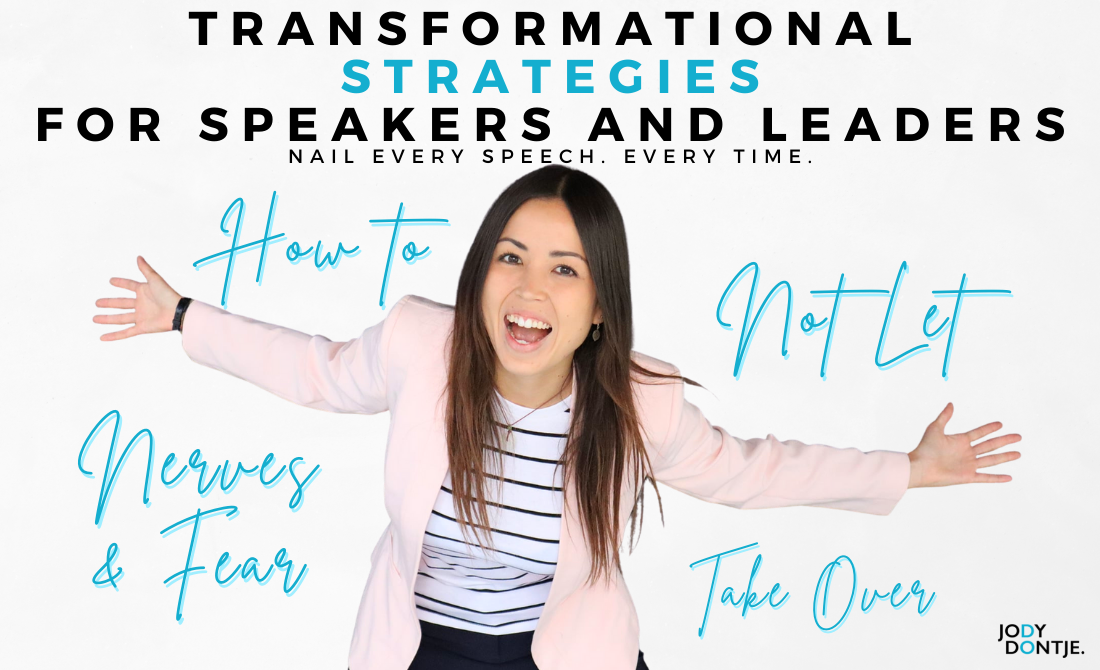
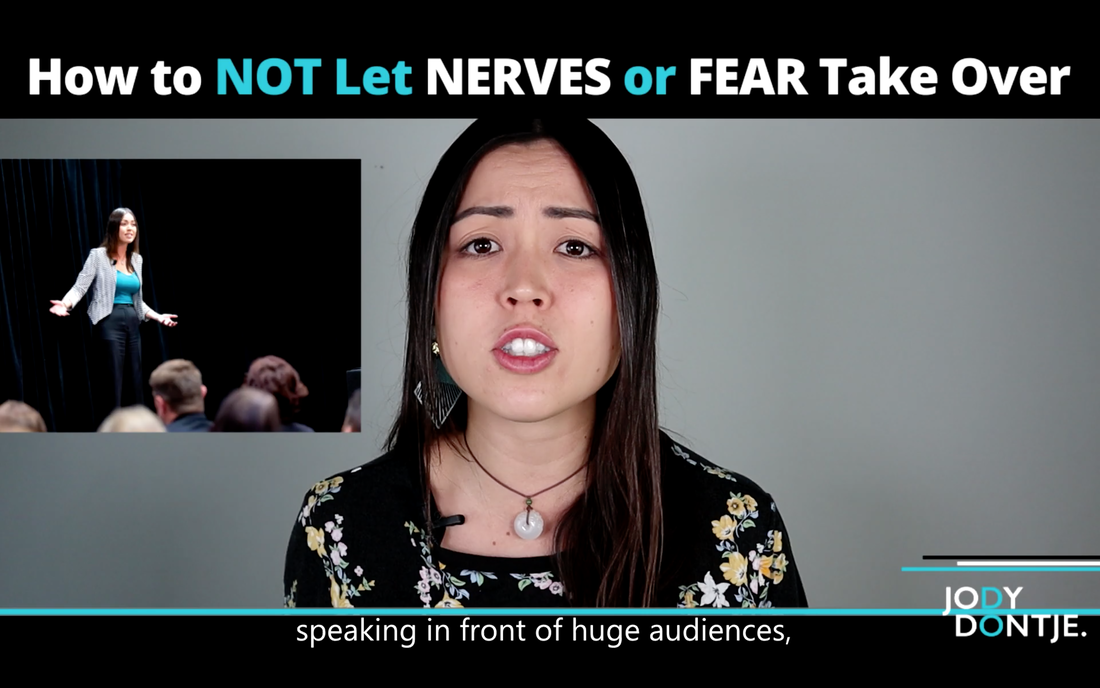
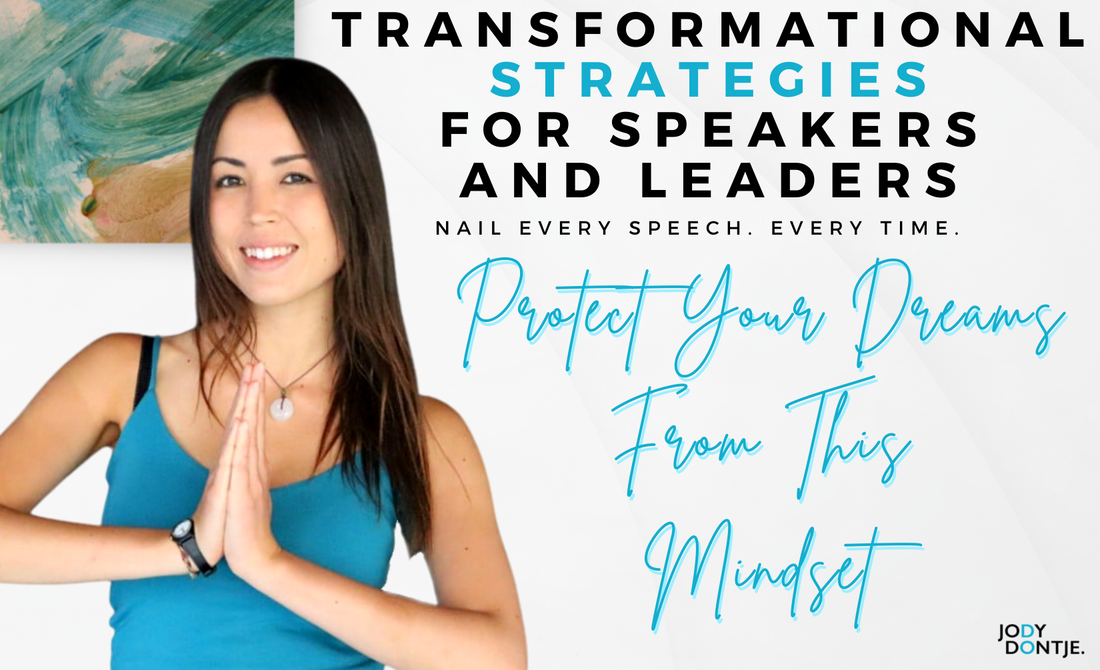
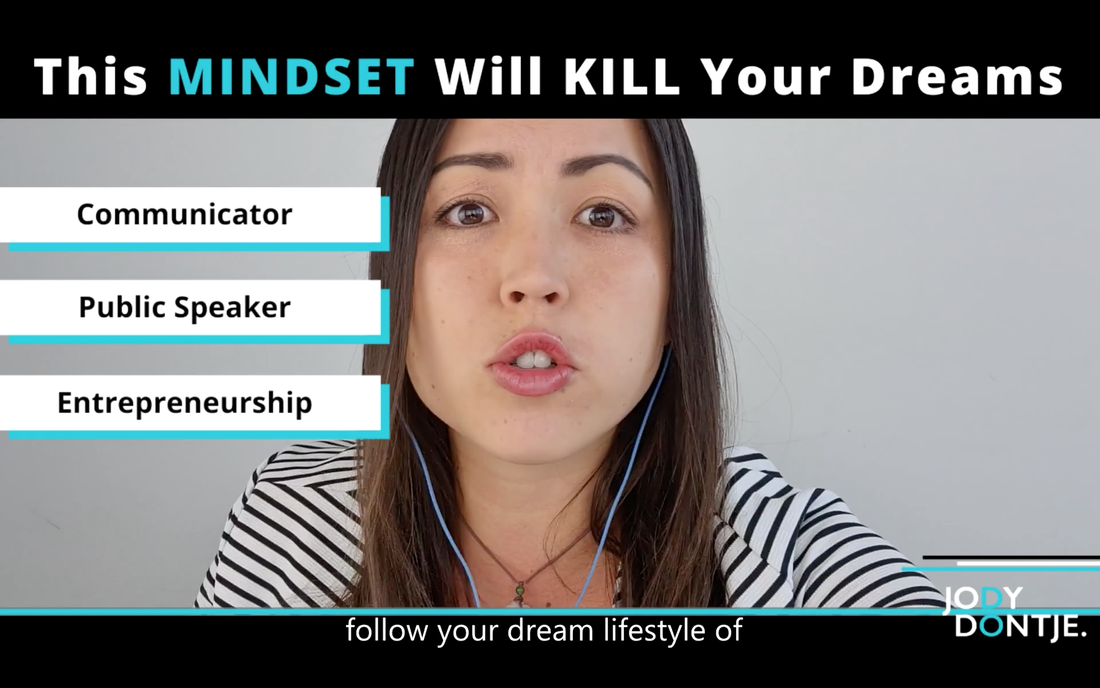
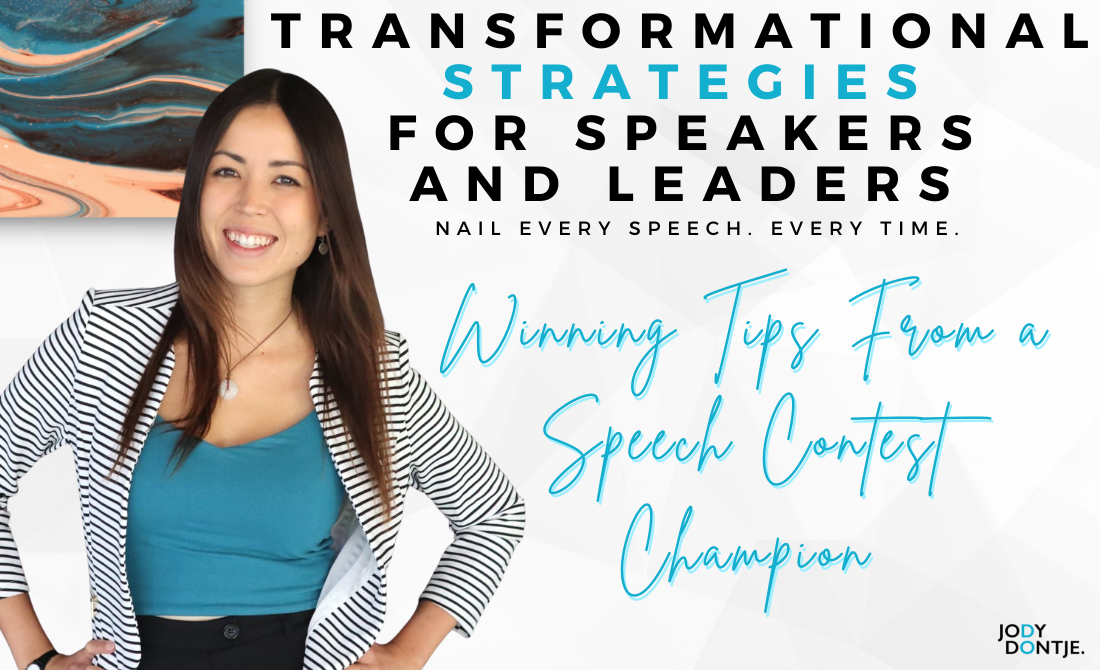
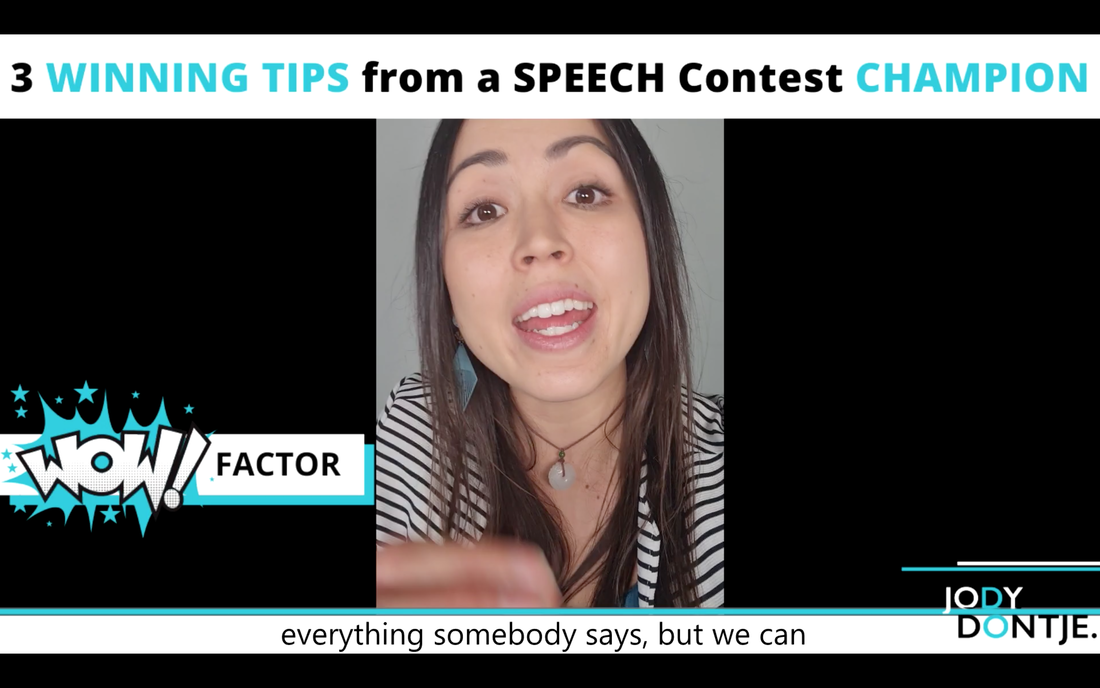
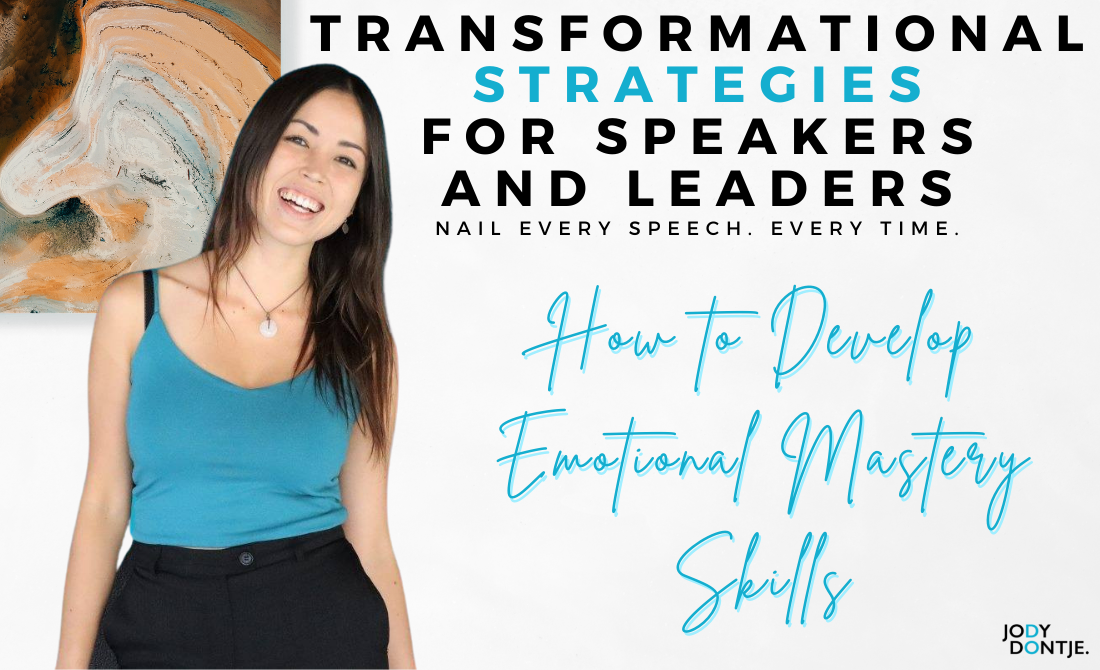

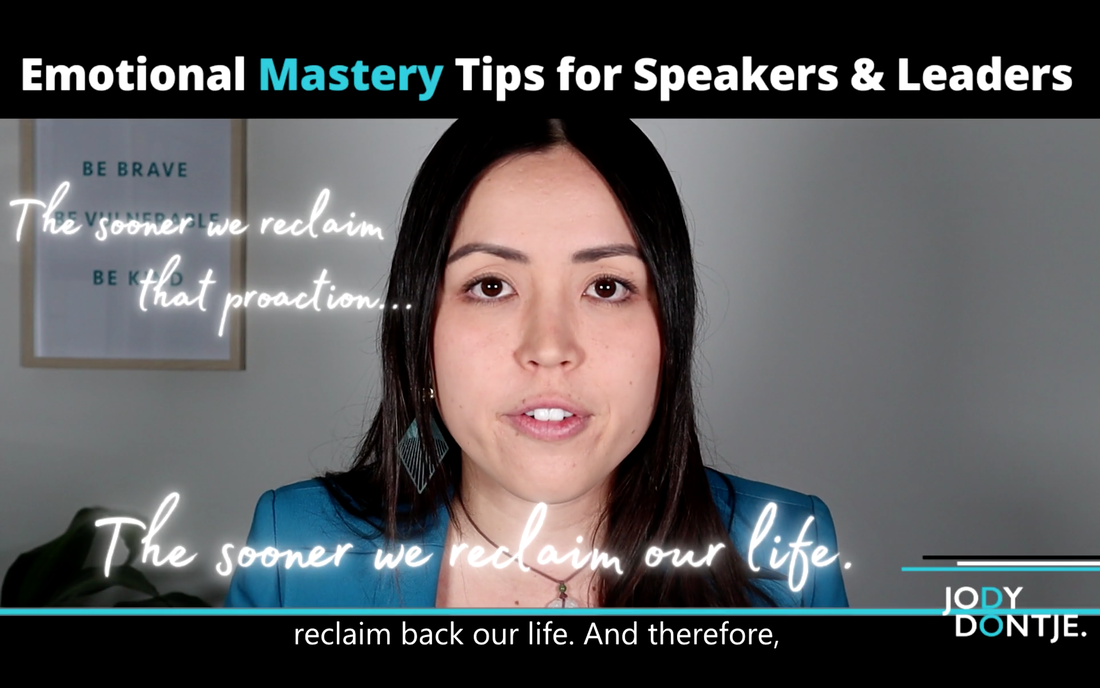
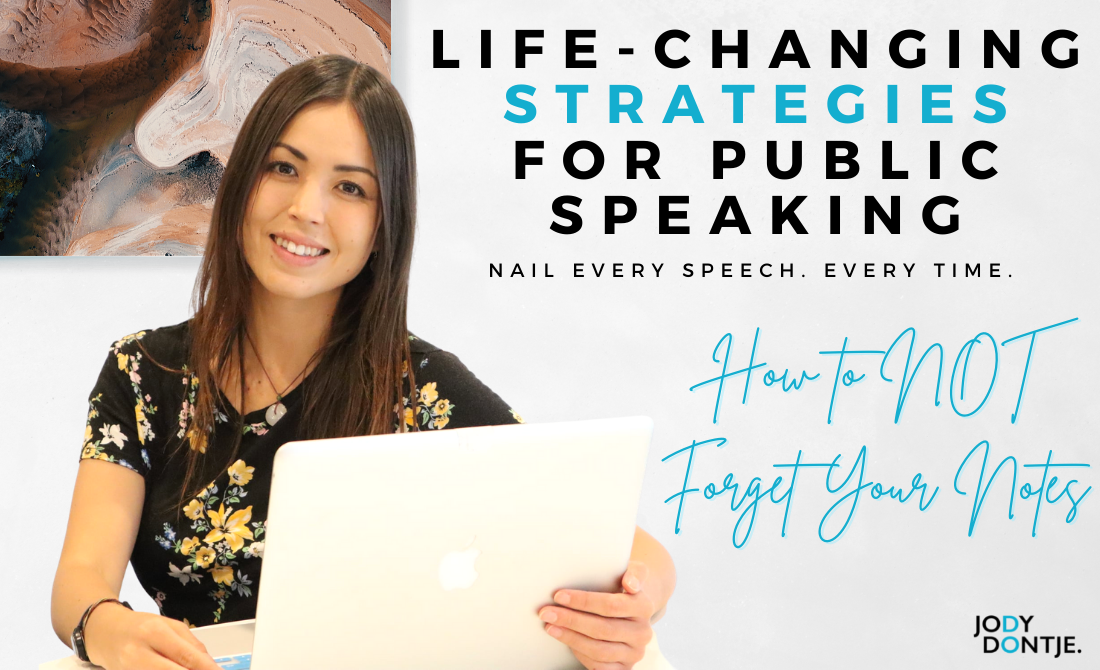
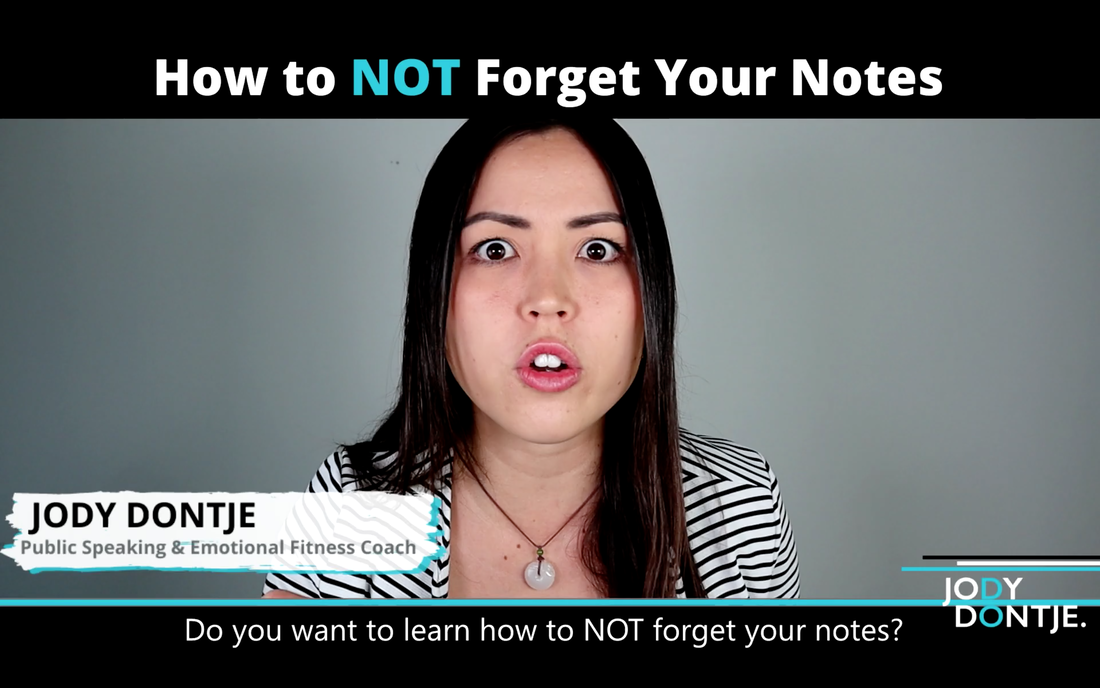
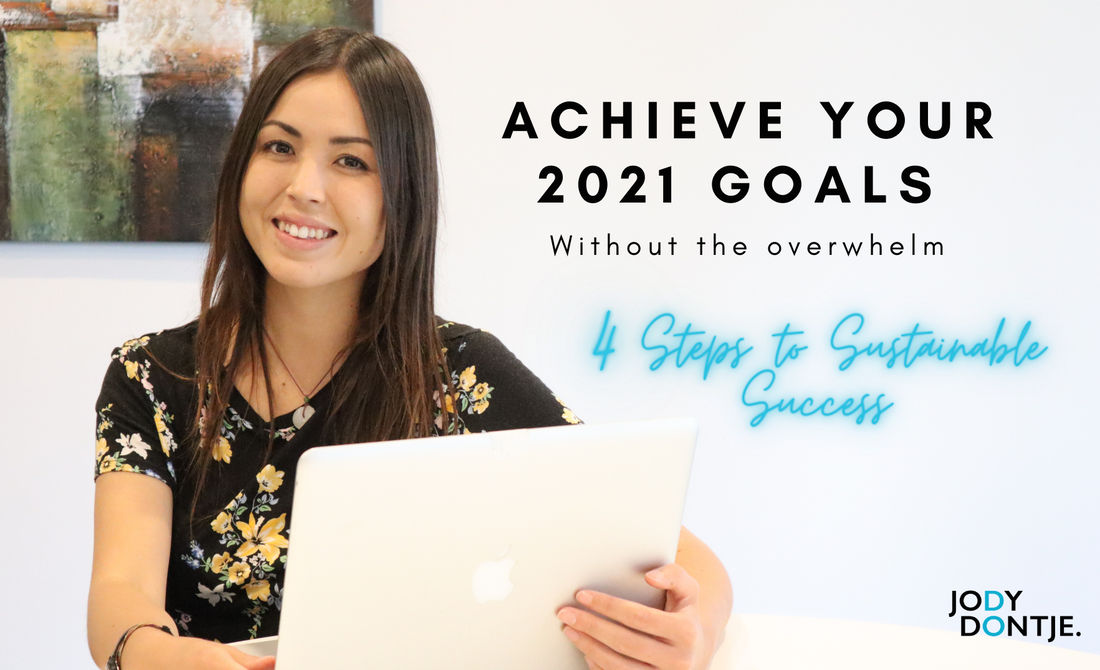

 RSS Feed
RSS Feed





